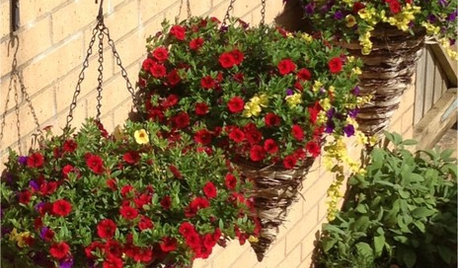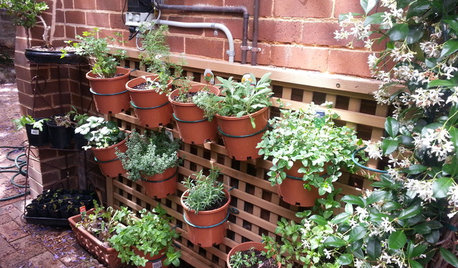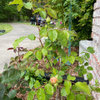I have a crazy idea and I am not sure if it will work...
noacceptance772
9 years ago
Related Stories

COLORCrazy for Color? Your Kitchen Cabinets Want In
Make over your kitchen in spectacular fashion with just colorful cabinet paint? Now there's a bright idea
Full Story
GARDENING GUIDESMake Sure You Read This Before Buying New Plants
Follow these 10 plant-selection tips to avoid buyer’s remorse
Full Story
FUN HOUZZEverything I Need to Know About Decorating I Learned from Downton Abbey
Mind your manors with these 10 decorating tips from the PBS series, returning on January 5
Full Story
DECORATING GUIDESYour Decor: Crazy for Kilim
Accent Your Home With This Global Geometric Pattern
Full Story
CURB APPEALCrazy for Colorful Cones: 5 Container Plantings Beyond the Bowl
Give even a small garden an exuberant vibe with hanging cones overflowing with blooming beauties
Full Story
WINTER GARDENING6 Reasons I’m Not Looking Forward to Spring
Not kicking up your heels anticipating rushes of spring color and garden catalogs? You’re not alone
Full Story
FARM YOUR YARD14 Crazy Places to Grow Edibles
Some Houzzers may lack ground for gardening, but they’re never short on imagination
Full Story
DECORATING GUIDESGo Crazy With Your Decorating — You'll Fit Right In
Trending in home looks everywhere: boldness and individuality. Get the scoop and see some adventurous examples here
Full Story










roseseek
noacceptance772Original Author
Related Professionals
Simpsonville Landscape Architects & Landscape Designers · Baltimore Landscape Architects & Landscape Designers · Carson Landscape Architects & Landscape Designers · Norwood Landscape Contractors · Matthews Landscape Contractors · Tempe Landscape Contractors · Burien Landscape Contractors · Cliffside Park Landscape Contractors · Ellicott City Landscape Contractors · Forest Hills Landscape Contractors · Lake Zurich Landscape Contractors · North Potomac Landscape Contractors · Ocoee Landscape Contractors · Paramount Landscape Contractors · Wethersfield Landscape Contractorsroseseek